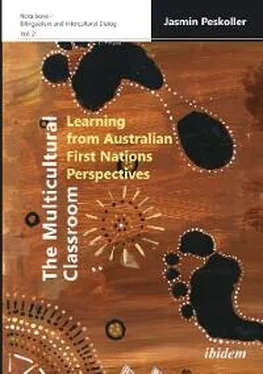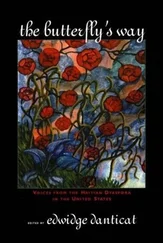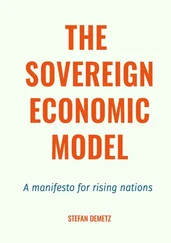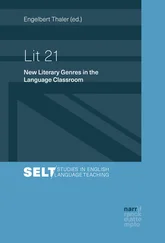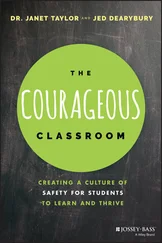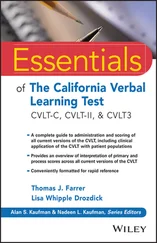ibidem-Press, Stuttgart
This book acknowledges the past and present Traditional Custodians of the Lands across Australia and pays respect to their Culture and Identity which has been bound up with the Land and Sea for generations.
Education can only be successful if students are met where they are,
linguistically and culturally.
Table of Contents
Acknowledgments Acknowledgments First and foremost, I would like to express my gratitude to Barbara Hinger, professor of foreign language education at the University of Graz, for her continuous support and for her encouragement to conduct further research in this intriguing field. Moreover, I am thankful for the valuable feedback from Eva Maria Hirzinger-Unterrainer, professor of foreign language education at the University of Innsbruck, in connection with this book. I am also particularly grateful for the fruitful collaboration with Australian author and linguist Margaret James, who introduced me to her ambitious projects with remote Australian communities and let me use her inspiring language learning materials for my book. Moreover, the research study would not have been possible without the generous support from Prof. Juanita Sherwood, pro-vice-chancellor of Indigenous Engagement at Charles Sturt University. In addition, I would like to thank Larry Hancock, a Gumbaynggirr language teacher in New South Wales, for allowing me to include one of the songs and lyrics he composed in the traditional Indigenous language of Gumbaynggirr in this book. Naturally, I would like to thank all the dedicated teachers, teaching assistants, principals, and university professors who were willing to share their valuable perspectives, experiences, and time with me and thereby vitally supported the research project. Finally, a special cheers goes to all my mates in Austria, Australia, and other parts of the world for their continuous encouragement and support. I am particularly grateful for the critical eye from my friends and colleagues Alice, Elena, James, Sandra, Magdalena, Theresa, Benny, Theresa, Veronika, Nicola, Kathrin, Grit, Sofie, Alexandria, Fabian, and Lukas in connection with this book. Without all of these special human beings, this book would have never evolved the way it did. You are deadly! 1 1 Deadly is an expression in Aboriginal English denoting fantastic (Arthur 1996).
List of Abbreviations List of Abbreviations ACARA Australian Curriculum, Assessment and Reporting Authority ACT Australian Capital Territory AE Aboriginal English ATSI Aboriginal and Torres Strait Islander People CEFR Common European Framework of Reference for Languages EFL English as a Foreign Language ESL English as a Second Language HARs Honey Ant Readers IA Indigenous Australian NAPLAN National Assessment Program—Literacy and Numeracy NSW New South Wales NT Northern Territory QLD Queensland SA South Australia SAE Standard Australian English TAS Tasmania VIC Victoria WA Western Australia
Preface Preface Seeing one of your students proceed in research after having finished their diploma studies is always a pleasure for a supervisor. In her very first course on foreign language education at the University of Innsbruck, Jasmin was one of my students. Her interest in the various topics presented and discussed in the sessions was immediately observable. During her studies, Jasmin enrolled as an exchange student at the University of Technology, Sydney, where she was awarded a study abroad excellence grant. Impressed by the cultural richness and Indigenous heritage, Jasmin started to plan a research project investigating the interface of education and Indigenous cultures in Australia and decided to apply for an international research funding offered by the University of Innsbruck. Her application being successful, Jasmin returned to Australia to carry out her diploma thesis project on the very topic she presents in this book. Learning from Australians First Nations Perspectives is what Jasmin embraced to do in her exploratory, small-scale interview study with 11 experts in the field of Australian First Nations education whilst also glancing at two volumes of the Honey Ant Readers textbook series put forward by Margaret James. All in all, it takes quite some courage and curiousness to open up to a culturally diverse and pretty different background to one’s own. Jasmin successfully stepped into that endeavor due to her goal-orientation as well as her outstandingly open-hearted and communicative qualities which made her pursue a challenging target in a self-paced way. Hence, Jasmin’s contribution offers valuable insights and fresh perspectives, strengthens research on Australian First Nations education and raises the issue of multilingual classrooms in an increasingly diverse world. Finally, I’d like to acknowledge the Traditional Owners of the land on which Jasmin carried out her research. I would also like to pay my respect to their Elders past and present and extend that respect to all Aboriginal and Torres Strait Islander peoples today. Barbara Hinger July 2021, Graz, Austria
Chapter I Introduction
1. Background and Relevance
2. Approach and Objectives
3. Structure of the Book
Chapter II Foundations of Multicultural Classrooms
1. Language and Multilingualism
2. Culture and Multiculturalism
3. Teaching and Learning in Multicultural Classrooms
3.1 Perspectives on Diversity in Education
3.2 Implementing Bilingual and Bicultural Approaches
3.2.1 Two-Way Education
3.2.2 Immersion Education
3.3 Education Policies
Chapter III Languages and Cultures in Australia
1. Multilingualism and Multiculturalism
2. The Multicultural Australian Classroom
3. Indigenous Australia
3.1 The Bilingual Context
3.1.1 The Significance of Indigenous Languages
3.1.2 The Significance of the English Language
3.2 The Bicultural Context
Chapter IV First Nations Education in Australia
1. A History of First Nations Education
2. Foundations of Indigenous Teaching and Learning
2.1 Relationships
2.2 Storytelling and Yarning
2.3 The Concept of Shame
3. Proposed Frameworks and Pedagogies
3.1 Eight Ways of Aboriginal Learning
3.2 Culturally Nourishing Pedagogy
3.3 Culturally Responsive Pedagogy
4. Adopted Approaches in Australian Schools
4.1 Two-way Schooling
4.1.1 Two-way Bidialectal Education
4.1.2 Worawa Aboriginal College
4.2 The Stronger Smarter Approach
5. Challenges in Indigenous Australian Education
Chapter V Research Study
1. Current Research Directions
2. Objectives and Design of the Study
2.1 Procedure
2.1.1 Constructing the Interview Form
2.1.2 Transcribing the Interview Data
2.1.3 Coding the Transcripts
2.2 Sample
3. Findings
3.1 The Role of Indigenous Languages
3.1.1 Pride vs. Embarrassment
3.1.2 Recognition of Linguistic Heritage
3.1.3 Orality of Indigenous Languages
3.1.4 Code-switching
3.1.5 Language Concepts and Worldview
3.2 The Role of Indigenous Cultures
3.2.1 Pride in Culture
3.2.2 Relationship Building
3.2.3 Family and Community Involvement
3.2.4 Home Values and Worldview
3.2.5 Cultural Concepts and Learning Styles
3.3 Frequency Analyses of Language and Culture Categories
3.4 Challenges in Indigenous Education
3.4.1 Historical Burden
3.4.2 Culture-related Differences
3.4.3 Lack of Awareness and Recognition
3.4.4 Systemic Shortcomings in Education
3.4.5 Lack or Stereotypical Inclusion of Culture
3.4.6 Socio-economic and Health Parameters
3.5 Frequency Analyses of Challenge Categories
3.6 Incorporating Indigenous Perspectives
3.6.1 The Importance of Incorporating Indigenous Language and Culture
Читать дальше
